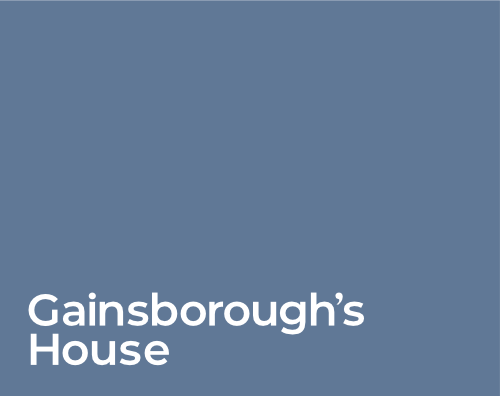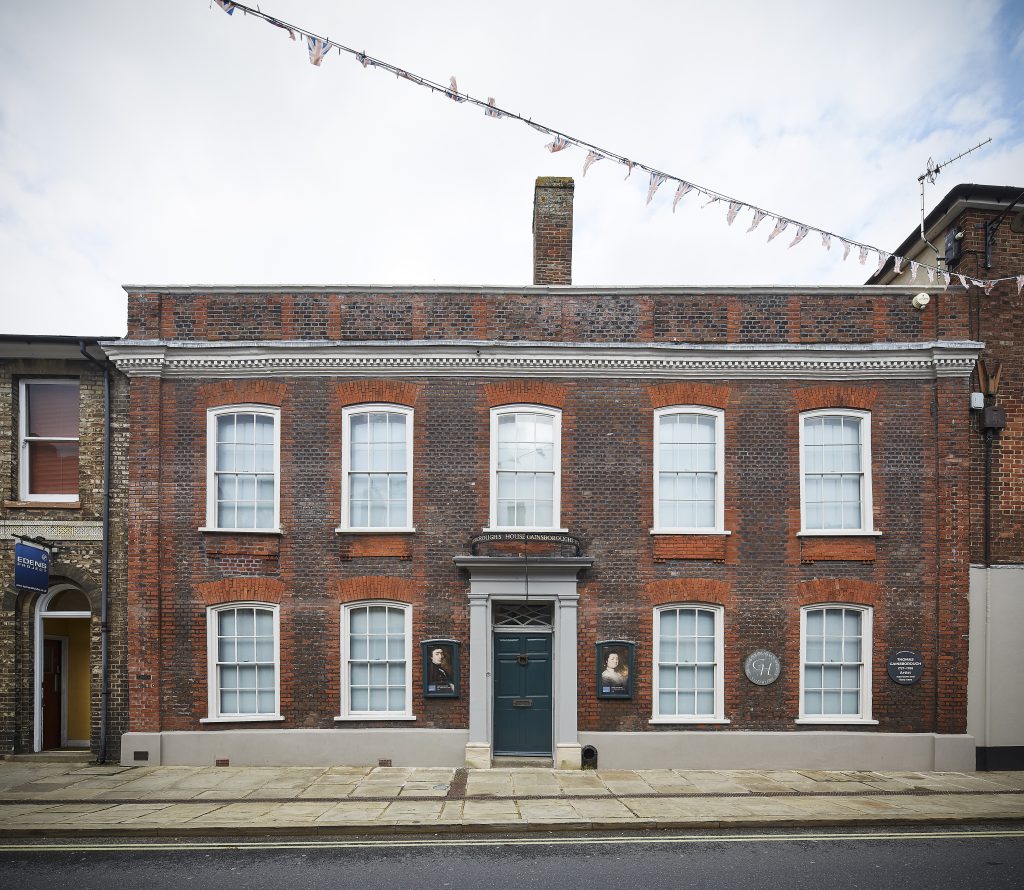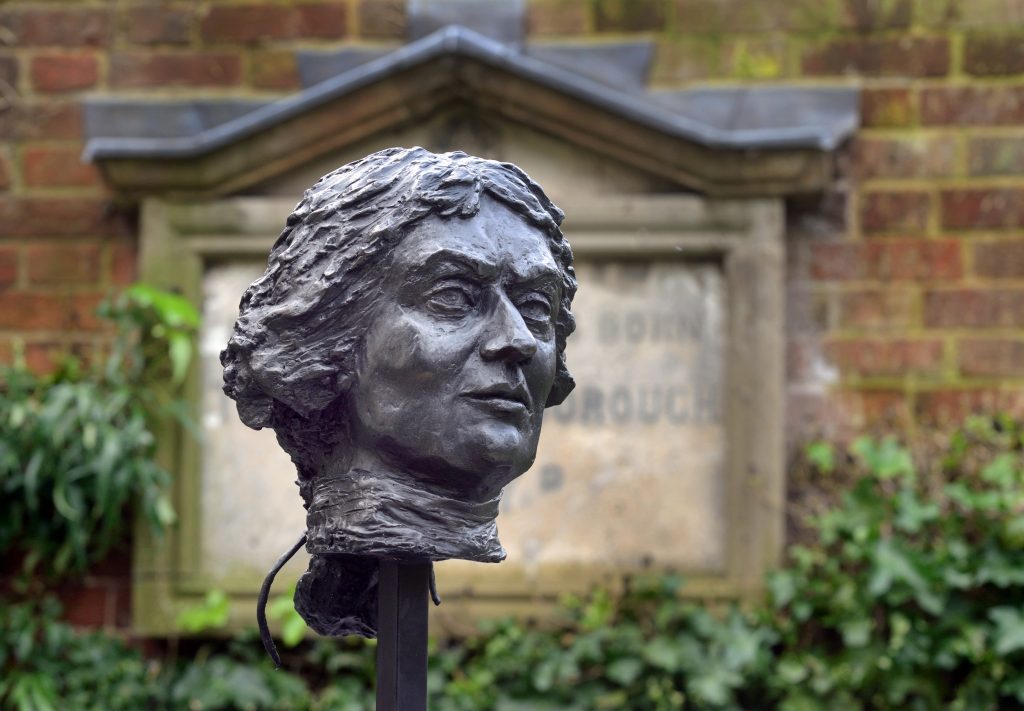The oldest visible part of the house is the oak doorway into the entrance room, which could date back to 1490.
The house at 46 Gainsborough Street in Sudbury, Suffolk dates back to around 1520. Thomas Gainsborough’s parents, John and Mary Gainsborough, probably moved here in 1722, five years before the artist was born.
Four distinct periods of architecture can be discerned in the building’s layout. The oldest visible element of the structure is an oak doorway leading into the entrance chamber, which may date back to as early as 1490. This doorway was probably the original front door to the house, leading straight into the Entrance Hall from the street. Today, only the Entrance Hall and Aubrey Herbert Room represent this early period of the building’s existence.
Around 1600 a house was built next door. The present Parlour, situated across the corridor from the Entrance Hall, is the only observable part of this structure to have survived, along with a small wall painting that probably dates to the 17th century. The basic framework of the house during this period consisted of oak beams with panels in between, the panels being filled with plaster known as ‘wattle and daub’. A whitewash would have been applied over the panels, with the interior walls then wainscoted with more fashionable oak paneling.




